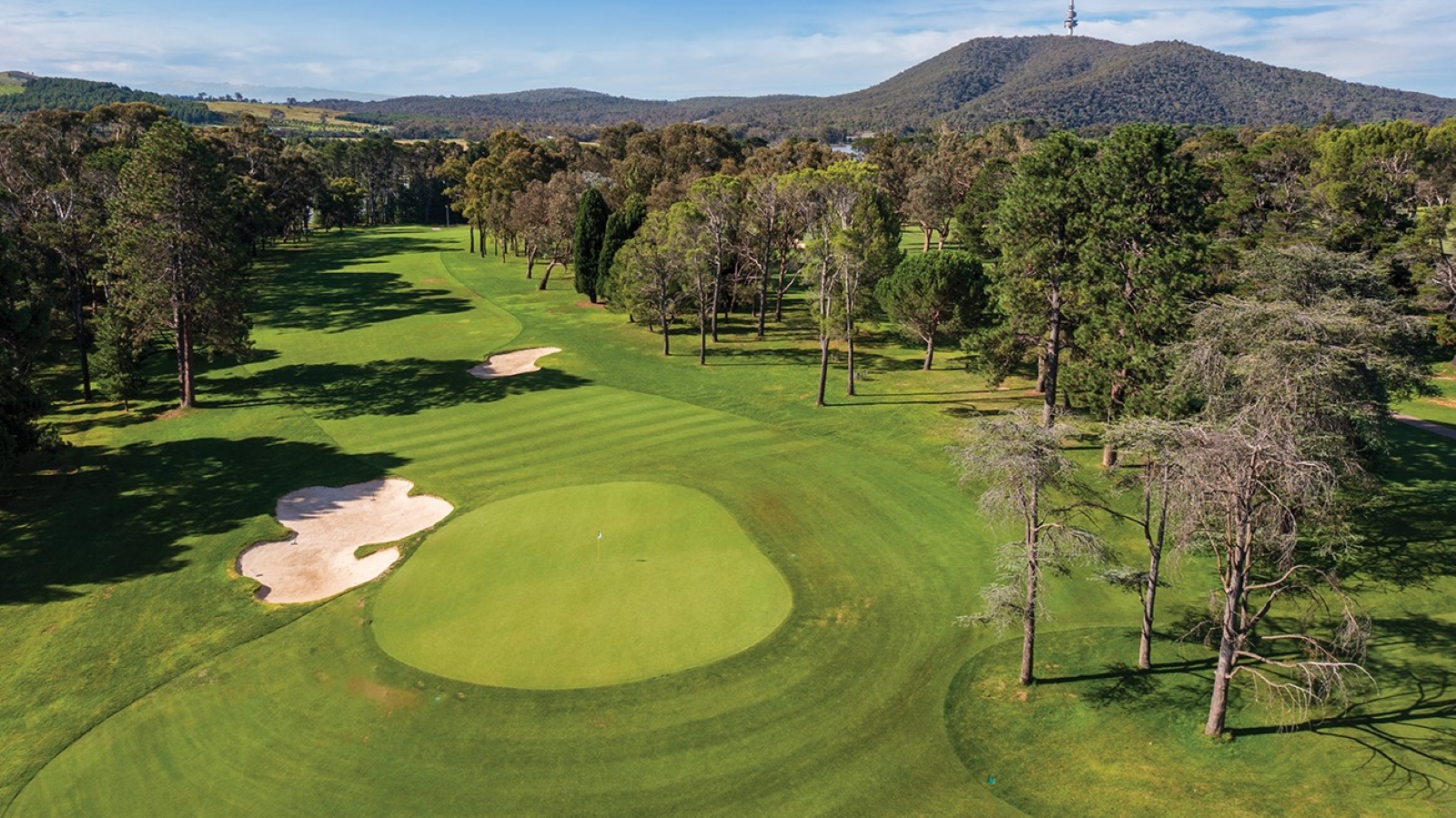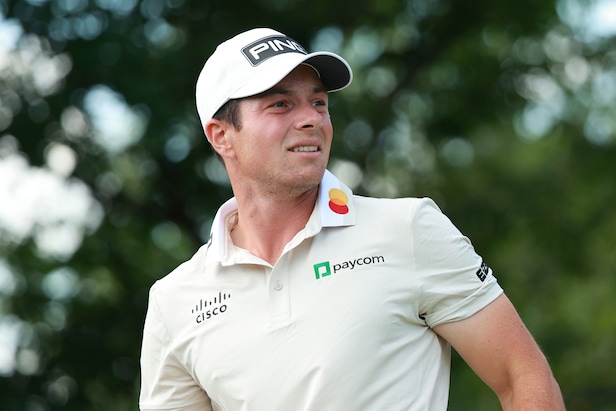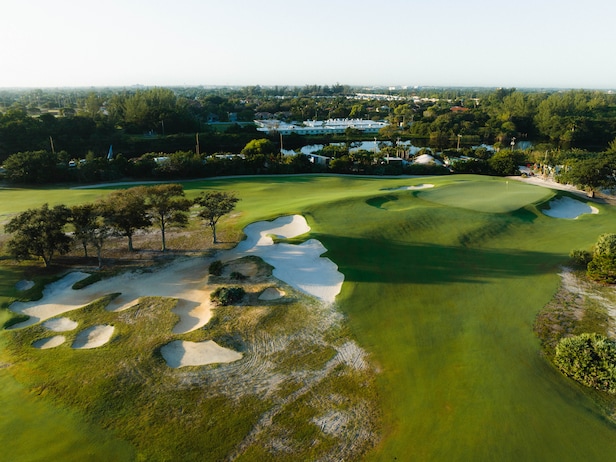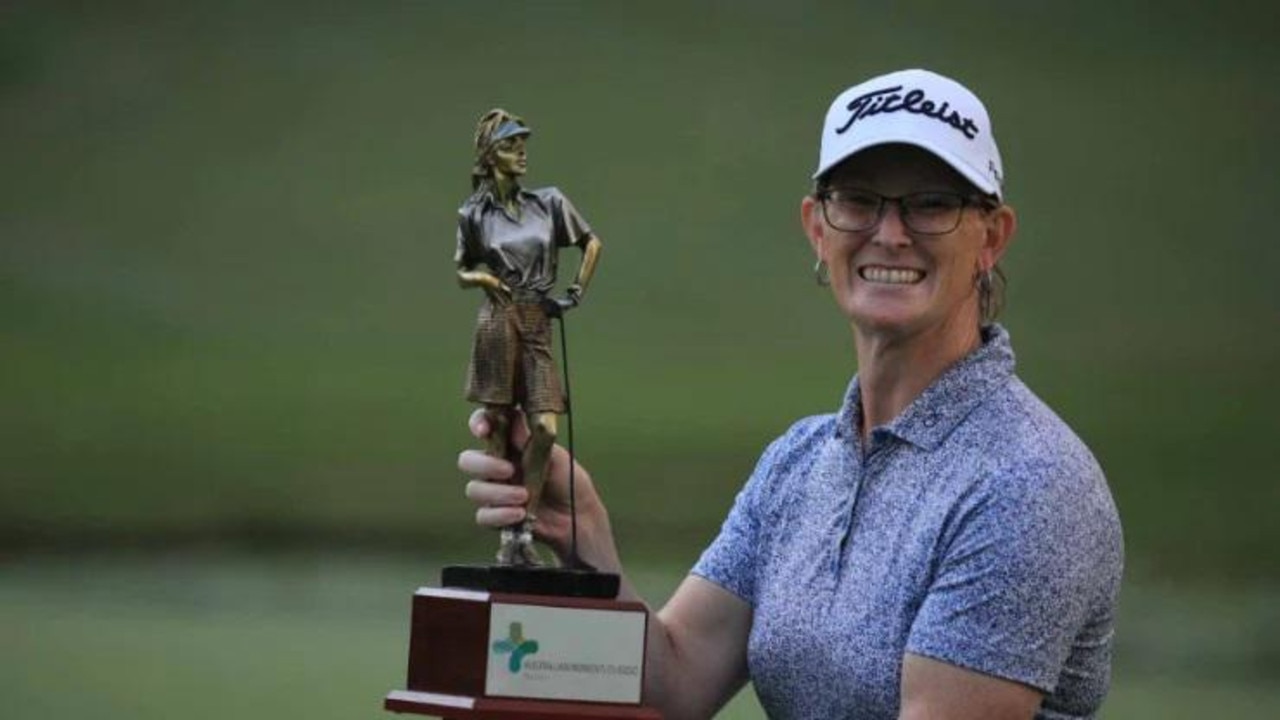No. Rather, we’re talking the sweet, pure, high-country air where Canberra sits, incongruously, atop the Great Dividing Range, the plateau lands at the northern edge of the Australian Alps. Where the weather might be described as ‘crisp’, or, if a southerly sweeps in from snow-capped Brindabellas, ‘Sweet Jesus! It’s Baltic! Lock up the animals!’
For golf, though, the weather is pure. Even when minus temperatures begat a thick morning frost, it means a clear, sunny, still day. Cold, sure. But, at any time, golfers can don the invention known as ‘clothing’. A beanie, a fleece, a body-hugging ‘skin’ of sorts, and you can stride onto that first tee, suck in that cold, sweet air, and set that Hot Dot free.
Enough with the air? So what about the air? So this: because Canberra is quite high – Mount Majura is 888 metres above sea level – the air is relatively thin. And thus, your golf ball will encounter less friction, and know greater penetration, and distance, than it would in the soupy humidity of your coastal flats. It means one less club. It is no bad thing.
You’ll use most of your clubs around the 27 holes of Royal Canberra Golf Club, the spearmint chocolate jewel of the greater Monaro. Royal Canberra is a pristine and manicured property that borders Lake Burley Griffin and the Governor-General’s place at Yarralumla.
The course photographs beautifully, particularly after the mowers have run pretty strips across the fairways, and has claims as the best inland course in Australia. It’s unquestionably the best in ‘the bush’.
“The first thing that most people notice is how picturesque it is,” Royal Canberra’s Golf Operations man, Peter Hayhoe, says. “People are awed by the trees. There’s a lot of big, older style pines. It has a ‘country’ or ‘Augusta’ type feel. There’s also a bit of atmosphere. Depending what time you come, you can get a low fog off the lake, so little bit eery, but very nice.
Be mindful of the sand and water on the strategically brilliant par-4 14th hole. PHOTO: Brendan James.
“And the greens are big and generally fast and firm, which everybody likes. They’re also fairly flat. They’re the toast of the town.”
Royal Canberra is largely forgiving off the tee, even with many holes lined by mighty, long-established pines. Each of the 27 holes become more testing the closer one approaches the tightly-cut, bentgrass greens. Hazards aren’t overly penal (well, the lake doesn’t muck around on 14) but you’ll most often find your ball.
After several, occasionally vexed years of ryegrass on its fairways, Royal Canberra has just rolled out nine holes of Santa Ana couch on the front nine of its original ‘Westbourne’ course, named after an arboretum used to test what sort of introduced species would thrive on the wind-ravaged and tree-less veldt-lands where they’d put the original Parliament House.
It wasn’t as controversial as putting Australia’s Capital closer to Sydney than Melbourne, but, as in any redevelopment or thing that is, you know, ‘new’, there were members who needed convincing. Now that the nine is in play, many are coming across. One member told Golf Australia magazine: “It looks like a championship golf course again.”

The final approach to the par-5 15th was dramatically altered by an OCCM redesign. PHOTO: Brendan James.
Hayhoe says it’ll get even better looking.
“The Santa Ana coach requires less water and maintenance, and with our seasonal, changing conditions, it’s a lot hardier and easier to maintain. When it goes dormant in winter, there’ll be a beautiful contrast between the couch and rough, which is still ryegrass, and which we’re going to grow all the way to the fairway’s edge.
“It’ll be the opposite of Palm Springs in the United States, which has green fairways surrounded by dormant rough. Here the rough will be green and there’ll be a beautiful contrast between the rough, the fairways, the trees, the pine straw,” Hayhoe says.
Royal’s bunkers have had an upgrade, too, with flatter, rivetted faces meaning more consistent outcomes when balls thud in from downtown.
The author’s favourite hole is the short par-4 7th, which at 289 metres from the tips is driveable for the bombers but easily double bogey-able. Rising from the tee box at the edge of the property, it has three fairway bunkers left, and a greenside trap right protecting a small, upturned saucer of a green. Take hybrid, 8-iron and do your best, or go big with the dog – your call, with all numbers on the table.
Hayhoe favours the stretch of holes from 14 to 18. “They’re down along the lake, a couple of par-5s. The 15th has been changed a lot with the OCCM [Ogilvy Clayton Cocking Mead] people. They put a border [a small, rocky stream] in front of the green and it’s a very tricky hole.
“The 18th is a feature hole, down and back up to the clubhouse; a lot of tournaments have been won on 18.” As Warren McCourt of Capital Golf Tours says: “The walk up the 18th fairway is one of the great walks in Australian golf.”
Come October and the ‘Yarralumla’ nine will also be ripped up and laid with Santa Ana couch, while the ‘Brindabella’ nine, designed by Peter Thomson and opened in 1997, will remain with ryegrass fairways as the club prioritises major capital works such as greenkeeper’s shed and washout areas. The strategic plan is for the course to have the same fairway grass on all 27 holes within the next few years.
The Brindabella nine, what locals call ‘out the back’, has an open, fun, ‘linksy’, ‘swaley’ and – if you will – ‘Thommo-esque’ feel, with six holes on the southern side of Dunrossil Drive, the one a new Prime Minister will drive down for the ceremonial sign-on.
I like the par-4 25th hole that travels upwards, over a ridge, demands an approach from the left side – or an extremely high one over some mighty right-side pines – to a flat green with a deep bunker front left. There follows the par-3 16th, which is uphill for 162 metres, with a bunker short right, and two more left and hole-high. Whether you need hybrid or 7-iron, hitting it is fun, even if you won’t see it stick.
CANBERRA TIMES
Almost since its inception, Canberra owned the moniker ‘The City Without a Soul’. It was suburbia, a ‘factory town’ of public servants, with odd rules governing when you could drink beer, and liberal ones when it came to porn, marijuana and firecracker supermarkets.
Today, though, while we weren’t looking, Canberra has grown up. There are 450,000 people in the city, it’s surrounded by cold climate vineyards, and served by funky bars, cafes and restaurants with nouveau cuisine. The golf, as you may have read, is top class.
In the winter you might complement a trip with an ACT Brumbies or Canberra Raiders game at GIO Stadium, or take in Greater Western Sydney at Manuka Oval. Sydney Thunder play T20s at the same venue, and there is the odd one-day international.

PHOTO: Supplied.
The Kingston and Manuka regions are fine spots, as is Braddon just north of the CBD, with several top-quality restaurants, cafes and bars, with one called ‘Public’, on the corner of Flinders Way and Franklin Street, a local favourite.
There is fine fun to be had at the Southern Cross Yacht Club on a Sunday afternoon with music, wine and fish-and-chips by the banks of Lake Burley Griffin. ‘The Dock’, part-owned by former ACT Brumbies players Ben Alexander and Scott Fardy, is one of several bars and restaurants along the popular Kingston Foreshore. In the north, the historic Old Canberra Inn at Lyneham does fine steaks, while at the Kingston Hotel, the famous ‘Kingo’, you can cook your own steak while nursing a glass of cold climate pinot.
 You could also fly in a balloon.
You could also fly in a balloon.
Canberra is surrounded by vineyards, all within 20 minutes of the city’s outer skirts. Getting around Canberra is so easy you could fall asleep. From Royal Canberra, for instance, on the shores of Lake Burley Griffin, to Federal GC, on the lower reaches of Red Hill, it’s a 4.4-kilometre trip which might take seven minutes in the worst Canberra traffic.
RIGHT: PHOTO: Supplied.
Canberrans don’t have ‘traffic’ as it’s understood by those who live in our major state capitals, they perhaps think they do, but they don’t. If your commute is longer than 30 minutes in Canberra – or if anything, really, is over 30 minutes away – you’re packing lunch.






